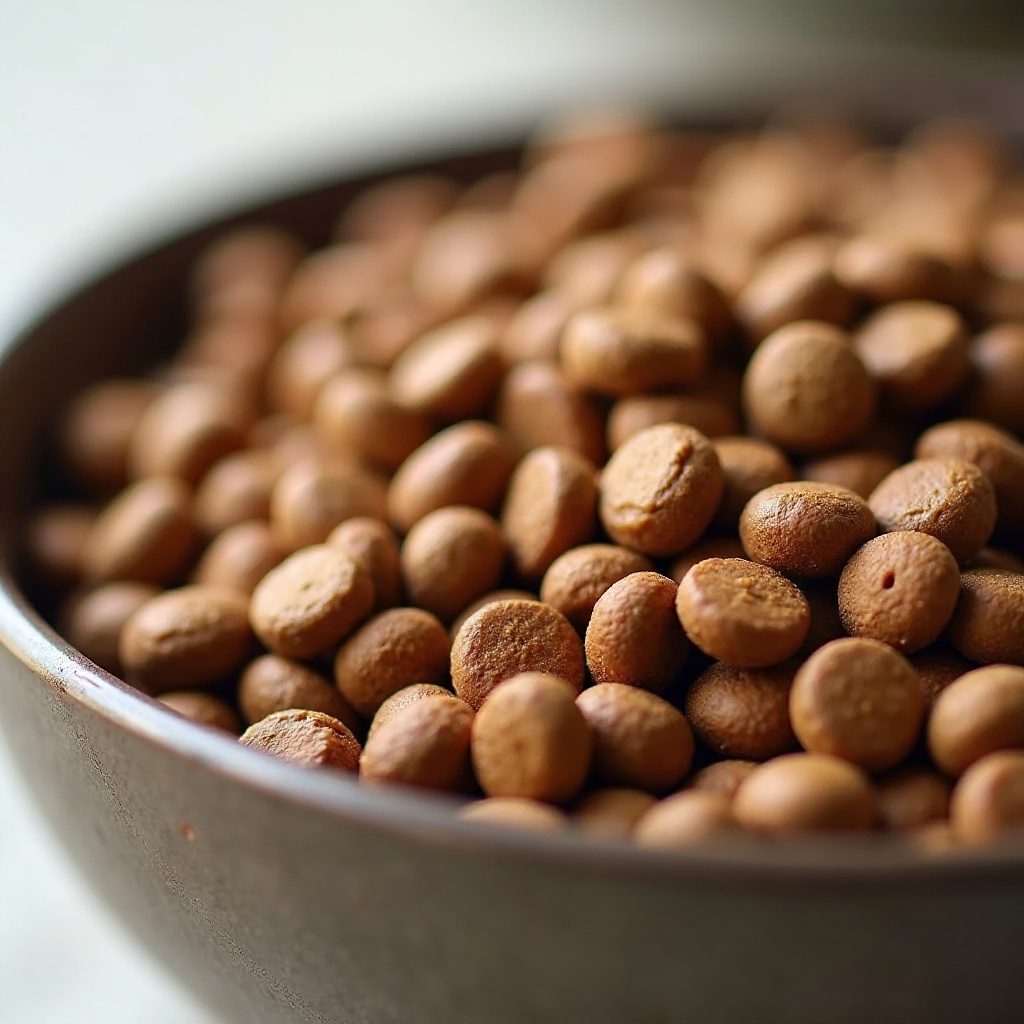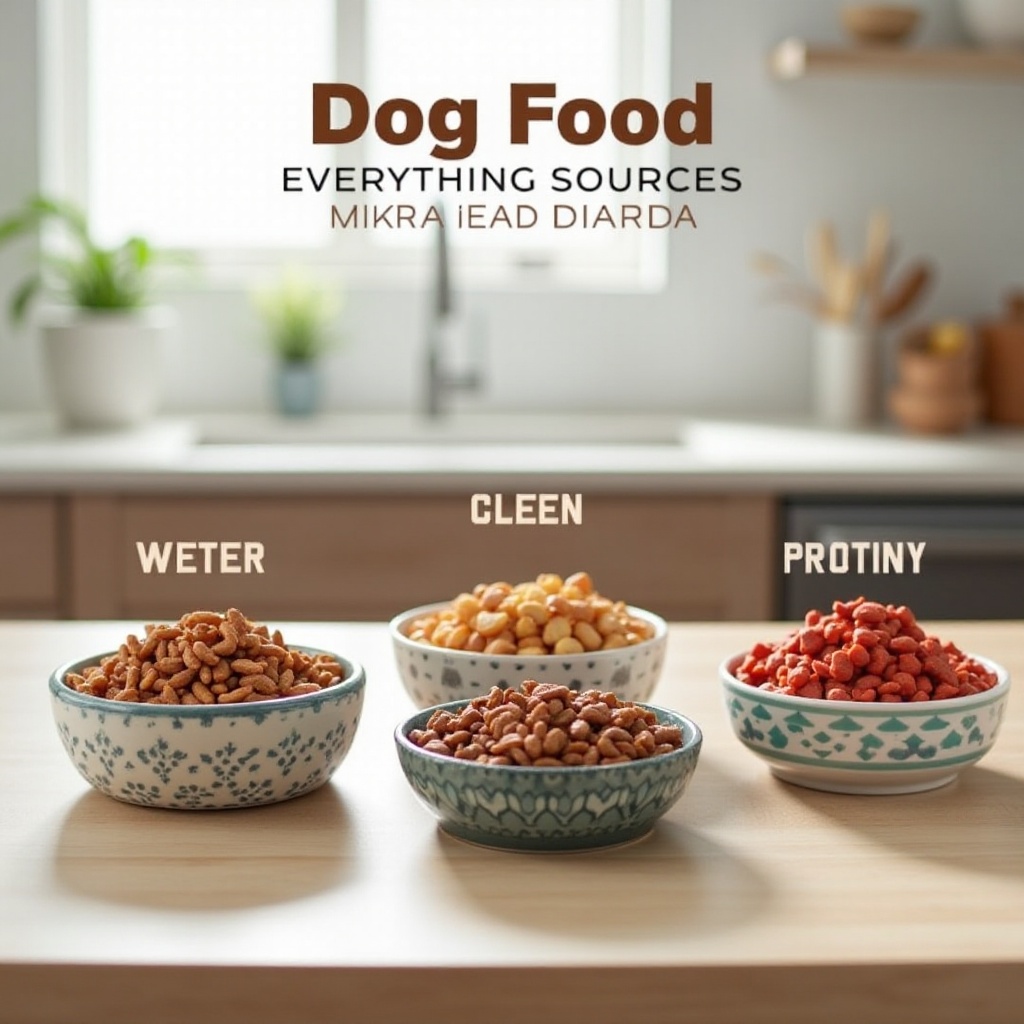Introduction
When it comes to ensuring our canine companions’ health and vitality, nutrition is paramount. Protein stands out as one of the essential nutrients in a dog’s diet because it supports muscle growth, repair, and overall function. You may have found yourself scrutinizing dog food labels, querying ‘dog food protein per 100g,’ and seeking clear guidance. This guide aims to break down everything you need to know about protein in dog food. By understanding its importance, deciphering food labels, evaluating protein sources, and knowing the recommended levels, you’ll be better equipped to make informed decisions for your pet’s diet.

The Importance of Protein in Dog Nutrition
Protein is a fundamental component of all living cells and, for dogs, it plays several vital roles. It’s not just about maintaining and building muscle mass; protein is also essential for:
– The growth and repair of tissues.
– The production of enzymes and hormones.
– Supporting the immune system.
Dogs, being naturally carnivorous, thrive on diets rich in protein. This macronutrient provides the amino acids necessary for their bodily functions. Unlike carbohydrates and fats, excess protein generally does not get stored as fat; instead, it is converted into energy or expelled. For active and growing dogs, a sufficient protein intake can make the difference between optimal health and various deficiencies.

Understanding Dog Food Labels
Shopping for dog food can be daunting, especially with the myriad of brands and formulations available. Knowing how to read and interpret dog food labels empowers you to make the best choice for your furry friend.
How to Read Protein Content
The protein content listed on dog food labels is typically given as a percentage of the total weight. For dog food protein per 100g, look for labels that specify ‘crude protein,’ which refers to the total protein content derived from both animal and plant sources. To determine the amount of protein per 100g, simply check the guaranteed analysis section on the packaging. For example, if a label states 25% protein, it means there are 25g of protein in every 100g of the food.
Common Terms and Indicators
When deciphering labels, familiarize yourself with common terms such as:
– Crude Protein: Total amount of proteins in the food.
– Dry Matter Basis (DMB): Makes it easier to compare wet and dry food equally.
– By-products: Could indicate lower quality ingredients.
– Complete and Balanced: Indicates the food meets nutrient profiles established by the Association of American Feed Control Officials (AAFCO).
Recommended Protein Levels for Dogs
Determining the right amount of protein your dog needs can be influenced by various factors, including age, breed, and activity level.
Factors Influencing Protein Needs
Several factors will affect how much protein your dog needs:
– Activity Level: Active dogs or working breeds may require more protein.
– Age: Puppies need more protein to support growth; seniors may need adjusted levels.
– Health Conditions: Certain medical conditions can impact protein requirements.
Protein Requirements by Age and Breed
- Puppies: Require about 22-32% protein per 100g of food for proper growth.
- Adult Dogs: Generally need 18-25% protein per 100g. This can vary based on size and breed.
- Senior Dogs: May need less protein, approximately 18-22%, depending on their health status.
Comparing Protein Sources in Dog Food
Selecting the right protein for your dog’s food can be a game-changer for their health. All proteins are not equal; the source and quality matter immensely.
Animal-based Protein Sources
Animal-based proteins are usually more bioavailable (easier to digest and utilize) than plant-based proteins. Common sources include:
– Chicken: High in essential amino acids.
– Beef: Rich in iron and B vitamins.
– Fish: Contains healthy omega-3 fatty acids.
– Eggs: Complete protein source with all essential amino acids.
Plant-based Protein Sources
While dogs are primarily carnivorous, they can benefit from plant proteins:
– Soy: Provides a full amino acid profile but may cause allergies in some dogs.
– Peas and Lentils: Good protein sources but can be lower in certain essential amino acids.
Alternative and Novel Proteins
Emerging trends in dog food include using novel proteins, which can reduce food sensitivities and allergies:
– Kangaroo: Low in fat, hypoallergenic.
– Duck: A good alternative for dogs with common protein allergies.
– Insects: Sustainable and nutrient-dense protein source.

Tips for Choosing High-Protein Dog Foods
Selecting high-protein dog food involves more than just checking the protein percentage. Here are some tips to guide you:
1. Check the Ingredient List: Ensure the first ingredient is a high-quality protein source.
2. AAFCO Certification: Look for products labeled as ‘complete and balanced.
3. Consult Your Vet: Tailor protein intake based on your dog’s specific health requirements.
4. Avoid Fillers: Ensure minimal filler content for a nutrient-dense option.
Conclusion
Ensuring your dog receives adequate protein per 100g of food is essential for their health and vitality. Understanding protein’s role, reading labels correctly, and evaluating the quality of protein sources will guide you in making the best dietary choices for your canine companion.
Frequently Asked Questions
What is the ideal protein content in dog food per 100g?
The ideal protein content varies by age and breed, generally ranging from 18% to 32% per 100g.
Can too much protein be harmful to dogs?
Excessive protein is usually not harmful, but an imbalanced diet can lead to other health issues. It’s best to consult your vet.
How can I ensure my dog gets quality protein?
Choose dog foods with high-quality animal-based proteins listed as the first ingredient and ensure it’s AAFCO-certified for a balanced diet.
